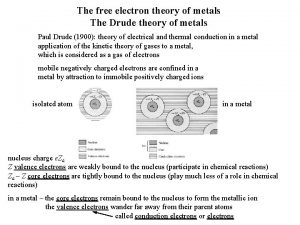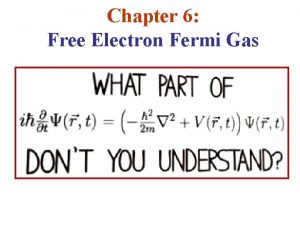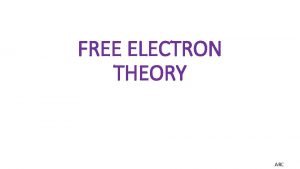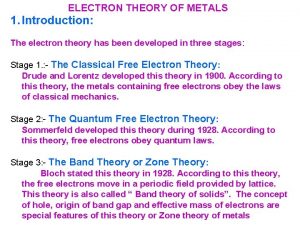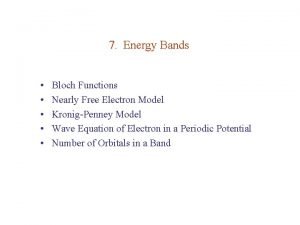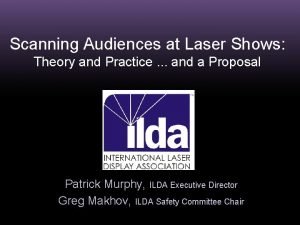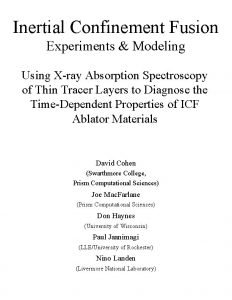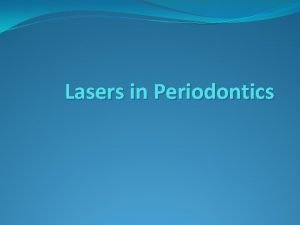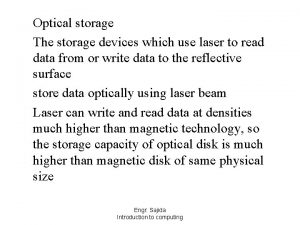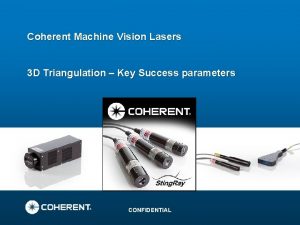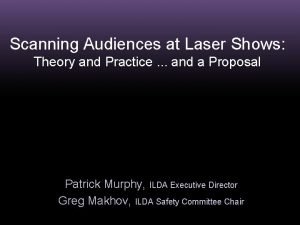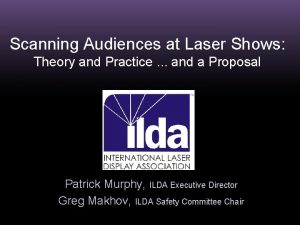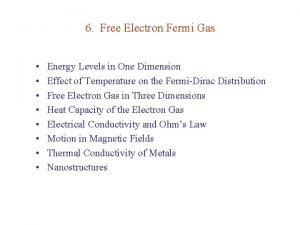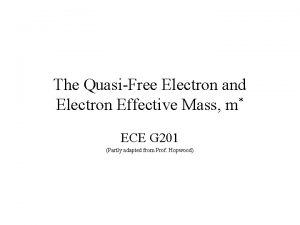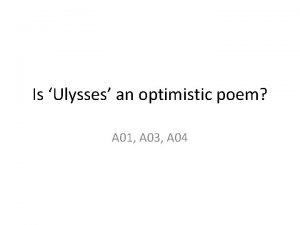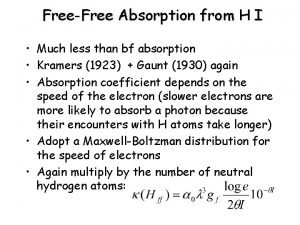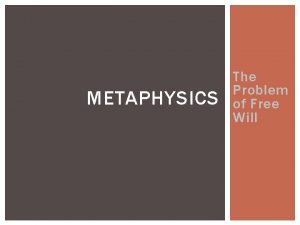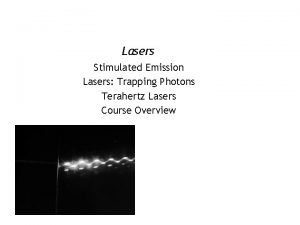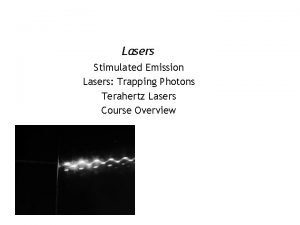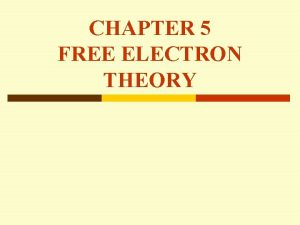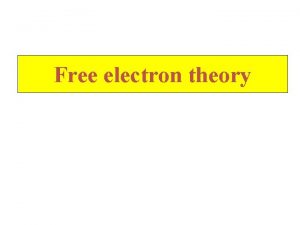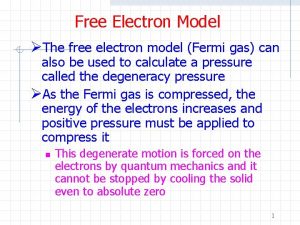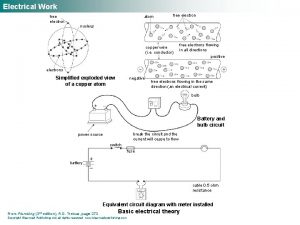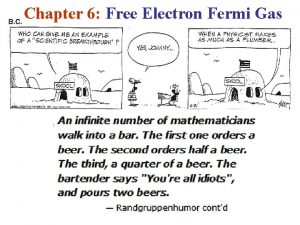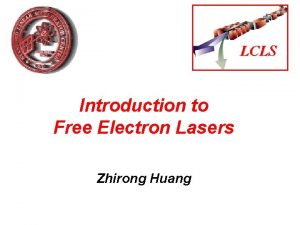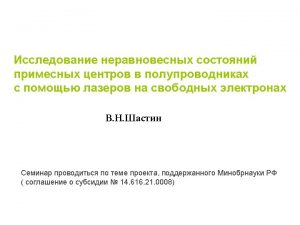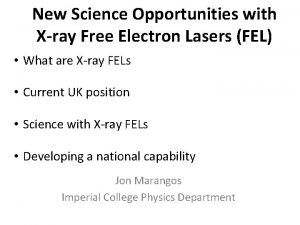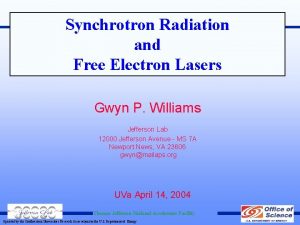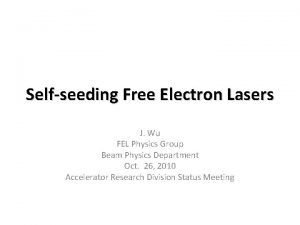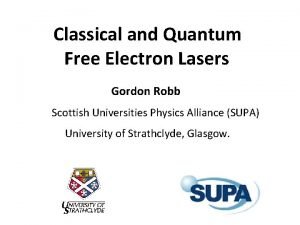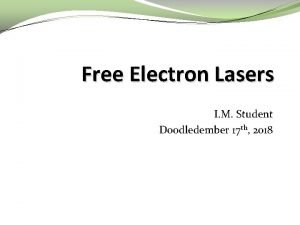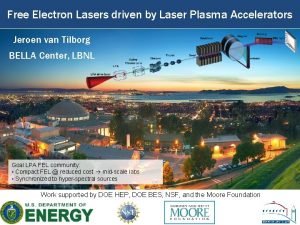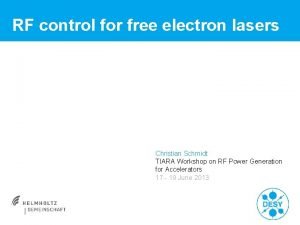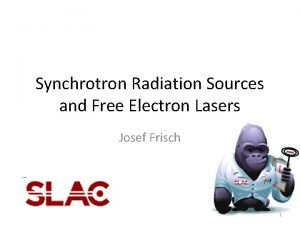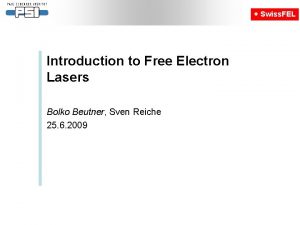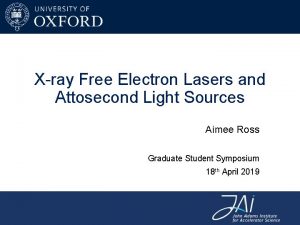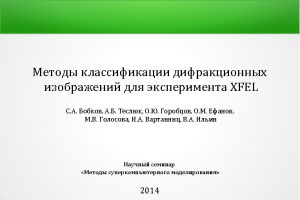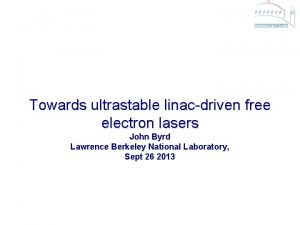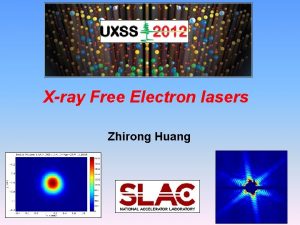Free Electron Lasers Theory Challenges G Dattoli Syncchrotron

























- Slides: 25

Free Electron Lasers : Theory Challenges? G. Dattoli

Syncchrotron Radiation …an old Story

Synchrotron Radiation an old story started before Laser( also on human scale) Radiation emitted by charged particles moving in magnets

What is a Free Electron Laser? A Tool to transform the kinetic energy of an electron beam into electromagnetic radiation with Laser like properties

What are the basic elements of a FEL? A) An accelerator Capable of providing an e-beam with «suitable» characteristics B) An undulator C) An Optical Cavity if the device is operated as an Oscillator

What is the Role of the accelerator An RF Accelerating system brings to a relativistic Energy E an electron Beam of current I The power associated to the e-beam is PUMP POWER ?

Energy and frequency Letardi -Chart


The New Livingston Plot R. Assmann B. Hidding

new scheme: PDPWFA simulation electric field electron density accelerated bunch Te. V p-bunches are available from conventional accelerators PDPWA accelerates e- in the wake of such p bunches to Te. V energy over a few 100 m electric fields = 100 x ILC or CLIC e- energy vs distance e- energy spread vs distance Allen Caldwell, K. Lotov, A. Pukhov, F. Simon, Nat. Phys. 5 (2009) 363.

new scheme: PDPWFA simulation electric field electron density accelerated bunch Te. V p-bunches are available from conventional accelerators PDPWA accelerates e- in the wake of such p bunches to Te. V energy over a few 100 m electric fields = 100 x ILC or CLIC e- energy vs distance e- energy spread vs distance Allen Caldwell, K. Lotov, A. Pukhov, F. Simon, Nat. Phys. 5 (2009) 363.

The Challenges A) Reduce the costs B) reduce the sizes C) Improve the «light» coherence properties D) Increase the number of experimental stations

Towards «Bonsai» FEL

An exercise: X-Band LINAC (70 Me. V/m)

ELEMENTS FOR A STRATEGY A) Reduce the undulator length using exotic devices (Laser Wave undulators, R. F. Undulators, …. ) B) Reduce the size of the accelerator using different

Plasma accelerating schemes

Plasma accelerating scheme

Is the future coming?

The dream

LIGHT AND PARTICLES in the 21 st century

Spare Transparencies

Frascati How many «free electron devices» ? For a ny kind of emission mechanism (Cerenkov, Smith Purcell…) a FEL device can be conceived

Interest For Plasma Fusion Applications Resonance condition electron cyclotron frequency in plasma Parallel component of the refractive index Resonance frequency 250 GHz Power 3 MW Efficiency >30%

Required Parameters

An Exercise to fix Numbers Operating Frequency 250 GHz Beam current 5 A Beam voltage 700 k. V Longitudinal velocity spread 0. 3 – 0. 5 % Energy spread 1 – 2 % Cavity magnetic field 5 T
 Drude free electron theory
Drude free electron theory Free electron fermi gas
Free electron fermi gas What are the drawbacks of classical free electron theory?
What are the drawbacks of classical free electron theory? Electron theory of metals
Electron theory of metals Nearly free electron model
Nearly free electron model Characteristics of lasers
Characteristics of lasers Audience scanning
Audience scanning Inertia xray
Inertia xray Types of lasers
Types of lasers It uses laser to read the data
It uses laser to read the data Machine vision lasers
Machine vision lasers Audience scanning laser
Audience scanning laser Audience scanning lasers
Audience scanning lasers Challenges of interest free banking in ethiopia
Challenges of interest free banking in ethiopia Free electron gas
Free electron gas Fexedx
Fexedx Basic electron theory
Basic electron theory Gibbs free energy spontaneous
Gibbs free energy spontaneous Unit of entropy
Unit of entropy Delta g
Delta g Allocation map
Allocation map Helmholtz free energy and gibbs free energy
Helmholtz free energy and gibbs free energy Free hearts free foreheads you and i are
Free hearts free foreheads you and i are Free body and soul free
Free body and soul free Free-free absorption
Free-free absorption Causal determinism
Causal determinism
